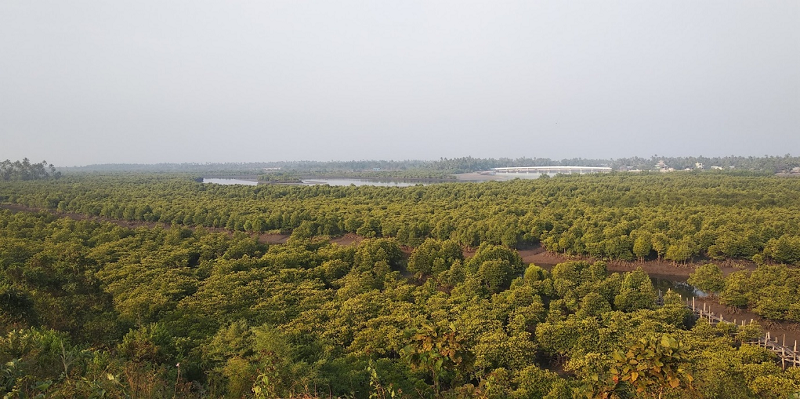
Pyindaye Mangrove Forest Reserve, Myanmar. Photo: APFNet
Mangroves are a special type of coastal forest uniquely adapted to growing in salt and brackish water. The plant species that grow here have complex root systems suited to low oxygen levels, fluctuating water levels, and varying degrees of salinity. Mangroves are considered guardians of the coast and lungs of the ocean. They are valuable not only for their rich biodiversity, carbon storage capacity, role in climate regulation and water purification, and protection of coasts from erosion and flooding, but also for the direct economic benefits to local communities.
Myanmar ranks seventh in the world in terms of mangrove cover, containing 3.3% of the global total (Spalding et al., 2010). Unfortunately, it is also ranked seventh in annual net forest loss, with an estimated 0.7% of its mangrove forests disappearing each year (FAO, 2020). This decline is primarily driven by livelihood activities, such as timber harvesting, fuelwood collection, and conversion for aquaculture.
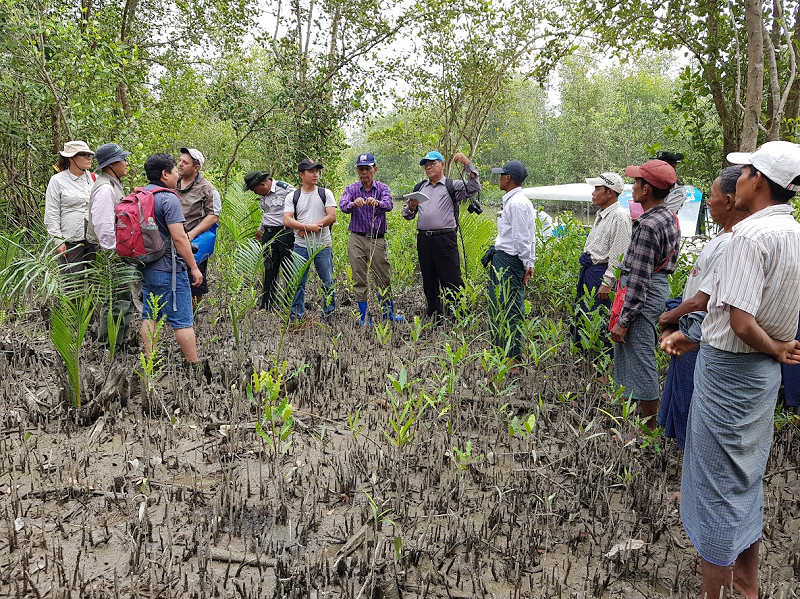
First project field meeting with community members. Photo: Dr Sang Phan
The APFNet-Funded Project
Since 2018, APFNet, in partnership with the Watershed Division of the Forest Department of Myanmar and the University of Queensland, delivered a project in the Amar sub-township within the Pyindaye Mangrove Forest Reserve, Myanmar. The project titled “Integrated Planning and Practices for Mangrove Management Associated with Agriculture and Aquaculture in Myanmar” aimed to restore mangrove forests at the same time as supporting the development of sustainable livelihoods. With years of dedicated implementation, the project delivered significant benefits and served as a successful demonstration of how capacity building, livelihood improvement, and mangrove restoration can be mutually supportive. The project activities were completed in 2022 and final evaluation concluded in 2025.
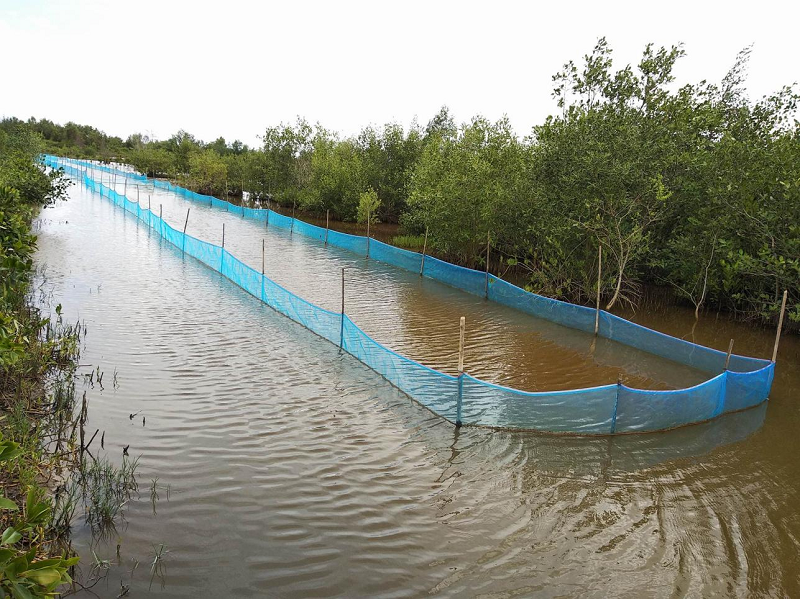
Demonstration site for shrimp production and mangrove restoration. Photo: APFNet
Building Local Capacity and Resilience
At the outset, extensive surveys were carried out with 133 local households to understand the project area and the current socio-economic environment. The results highlighted the critical role of mangroves and mangrove-based livelihoods, with over 62% of households reporting that they utilized forest products, 35% derived income from mangrove-based fisheries, and 15% of households were involved in mangrove-specific crab catching. The survey responses showed that income diversification was very low and over two-thirds of households reported that their economic situations have worsened over the last five years.
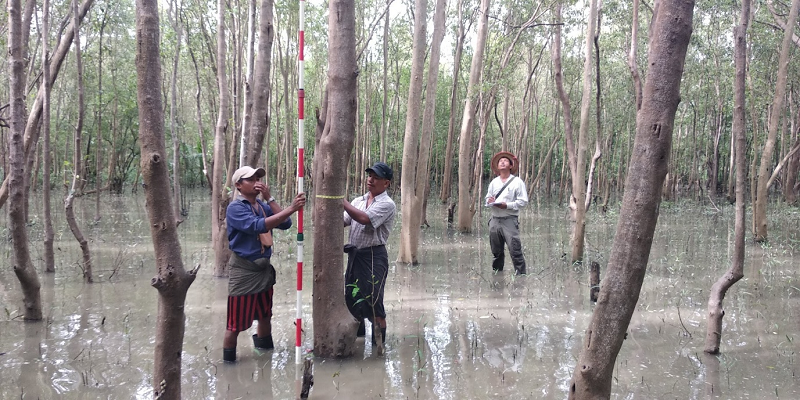
Conducting a survey of the mangroves. Photo: Dr Sang Phan
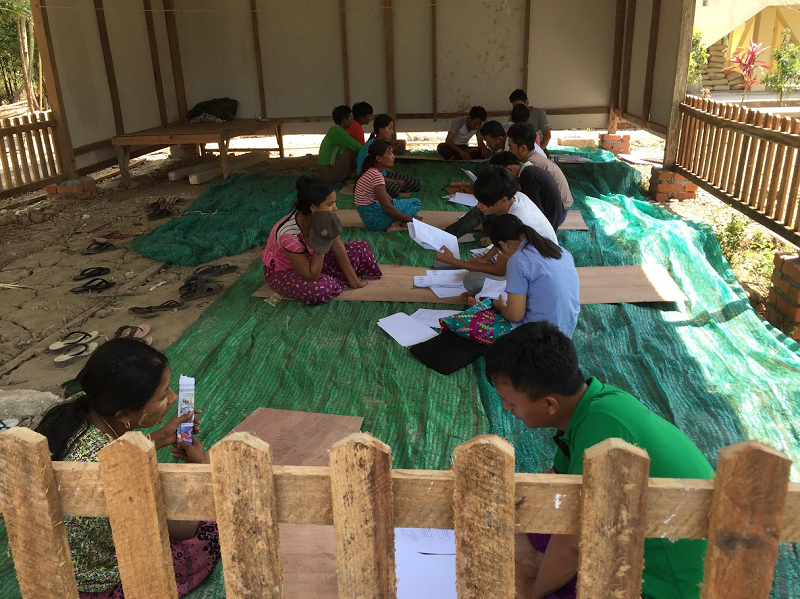
Conducting surveys with local farmers. Photo: Dr Sang Phan
The project addressed these challenges by improving local capacity and resilience. Over 600 technical staff, farmers, local leaders and residents were trained on sustainable mangrove-based aquaculture and mangrove restoration techniques, benefiting over 400 households within the community forestry user group (CFUG) area. Local researchers and technical staff were also trained in how to effectively undertake surveys and mangrove inventories, to enable ongoing forest and socio-economic evaluation. In total, 14 training courses and study tours were delivered.
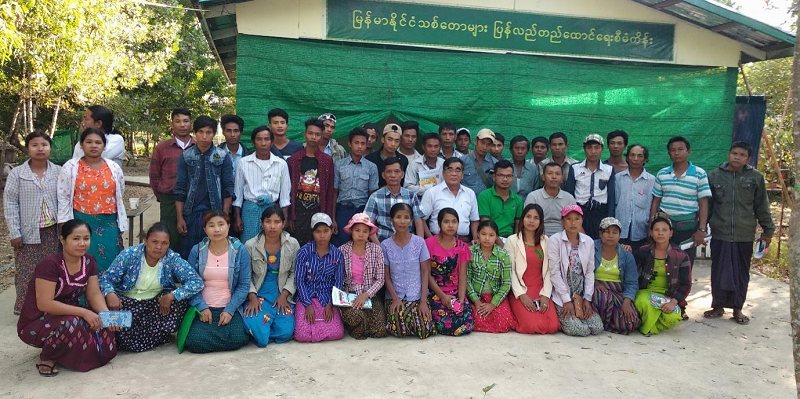
Facilitators and participants of a training course on mangrove restoration. Photo: APFNet
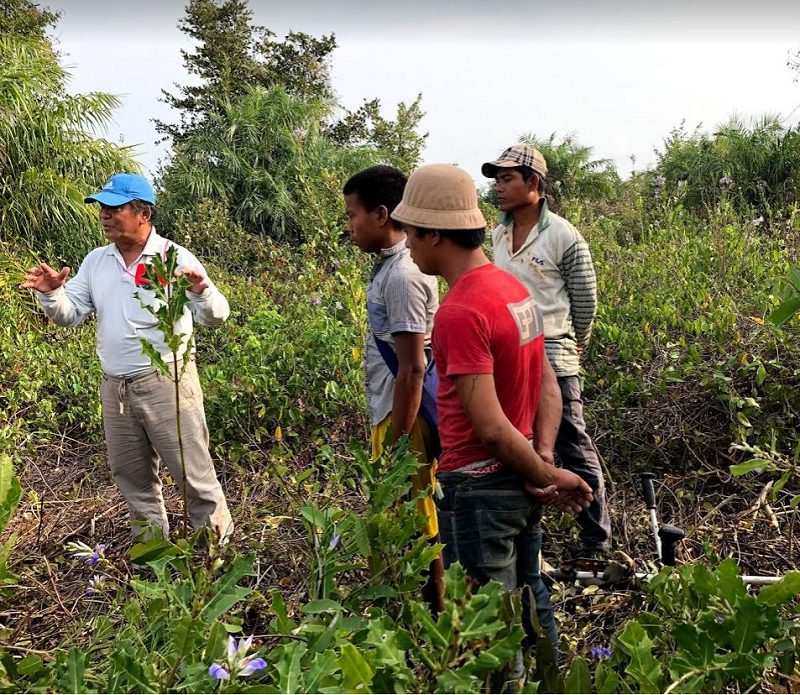
Training session on mangrove silviculture with community members and local leaders. Photo: Dr Sang Phan
To complement the training, demonstration models were established to show how to put the theory into practice. Covering 71 ha, the demonstration models restored 5 ha and enriched 66 ha of mangrove forests. Within the enriched forest, mud-crab fattening and shrimp production models were established.
The mud-crab fattening pilots showed a 50% increase in productivity through higher intensity crab production in smaller ponds. The smaller pond size also offered greater opportunity for income diversification, exemplified by one resident who primarily earned her income through home gardening and selling coconuts starting looking into mud-crab fattening.
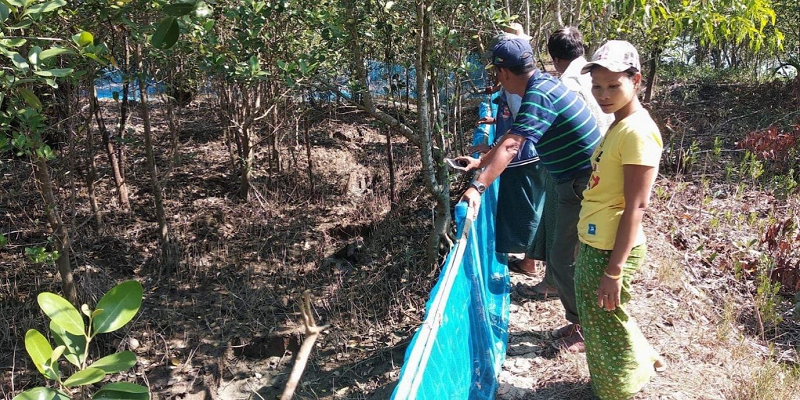
Hands-on mud-crab fattening training session at the demonstration site. Photo: Dr Sang Phan
Delivering Environmental Benefits
Beyond the livelihood benefits, ecological improvements were also notable. Across the project area, the number of trees with a diameter at breast height (DBH) greater than 4 cm increased from 200 in 2018 to 400 in 2022. The project tested four different restoration techniques: (1) improvement thinning to promote natural regeneration, (2) improvement thinning followed by low-density single- tree species enrichment planting, (3) improvement thinning followed by low-density mixed-species enrichment planting, and (4) improvement thinning followed by high-density mixed-species enrichment planting. The most successful model proved to be improvement thinning followed by low-density mixed-species planting, which offered strong canopy recovery at a relatively low cost. In the planted areas, survival rates exceeded 75% after one year.
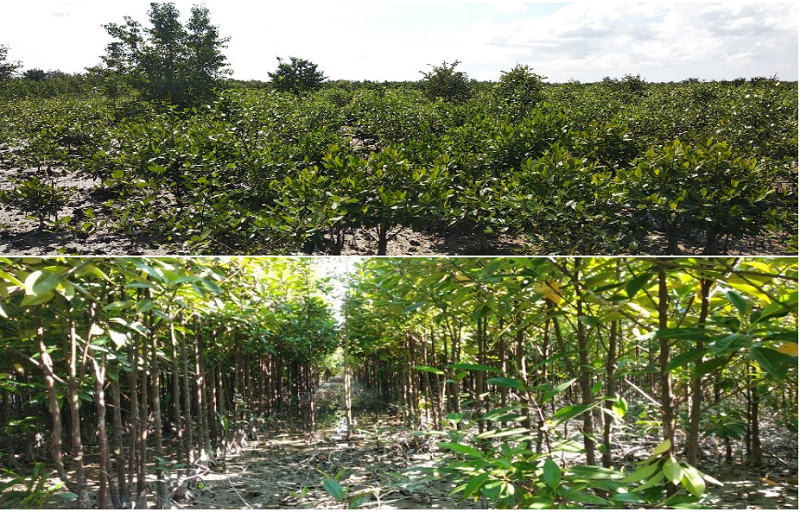
A mangrove forest in 2018 (top) and the same forest in 2020 after thinning and enrichment planting (bottom). Photo: Dr Sang Phan
The project attracted significant interest from the local communities and so expanded its scope, ultimately restoring 87.6 ha. To support this expansion and promote ongoing community-led restoration, two nurseries were established and seedling production was scaled up to 700,000 seedlings—far surpassing the original project goals. Additional seedlings were distributed to community members to plant where they chose (scattered planting), enhancing tree density and diversity in other areas outside of the targeted project enrichment.
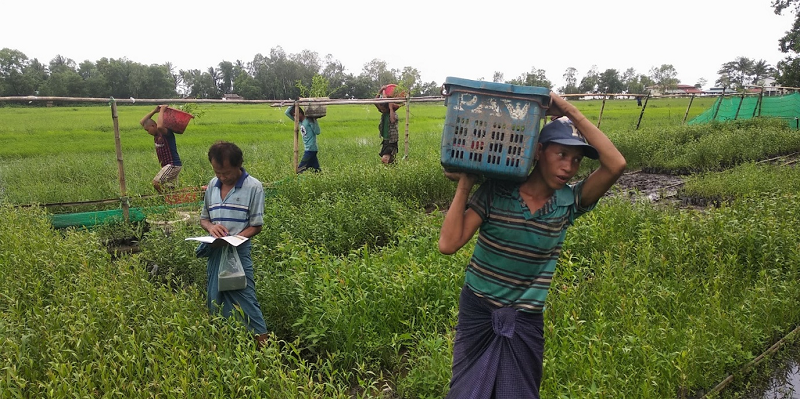
Local community members working in the nursery. Photo: APFNet
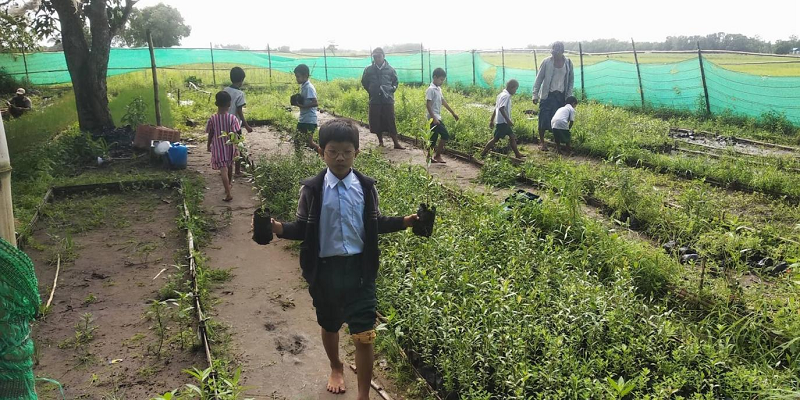
Local children taking part and distributing seedlings for scattered tree planting in the local area. Photo: Dr Sang Phan
One of the key lessons from this project is the vital role of community involvement and capacity building in successful mangrove restoration and sustainable livelihood development. By working closely with local residents, the project not only demonstrated effective techniques for restoring degraded mangrove forests, but also developed practical, community-driven models for sustainable aquaculture that can be adapted to local contexts and replicated in other mangrove areas. It illustrates that restoring ecosystems can and should go hand in hand with building stronger, more resilient communities and livelihoods.
Click here for more information about this project:https://www.apfnet.cn/column295/column302/1114.html
References:
FAO. (2020). Global Forest Resources Assessment 2020. https://openknowledge.fao.org/handle/20.500.14283/ca9825en
Spalding, M., Kainuma, M., & Collins, L. (2010). World Atlas of Mangroves. Earthscan Ltd.
引用:
FAO. (2020). Global Forest Resources Assessment 2020. https://openknowledge.fao.org/handle/20.500.14283/ca9825en
Spalding, M., Kainuma, M., & Collins, L. (2010). World Atlas of Mangroves. Earthscan Ltd.